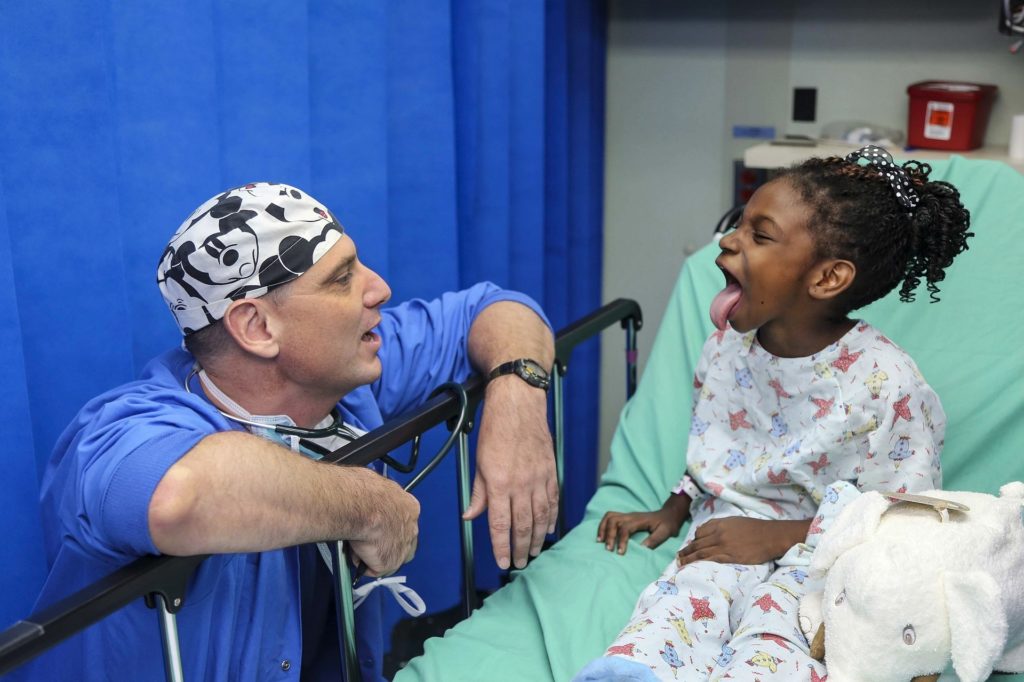A new article critiques the International Society for Bipolar Disorders’s (ISBD) new Task Force Report on Pediatric Bipolar Disorder (PBD). The report “suggests a high prevalence for the PBD phenotypes in community samples around the world.” The critique, led by Peter Parry, senior lecturer at the University of Queensland in Australia, raises gaps in the current literature on PBD and cautions against the practice of diagnosing and treating bipolar disorder in children and adolescents without further research.
“We suggest that further studies are required before the USA practice of diagnosing and treating BD in childhood is widely translated into the mental health care of millions of children and youth in the developed and developing world. It is premature to treat children for putative BD, when we remain unsure of the developmental pathways,” write the authors.

According to the ISBD report, 2% of children and youth (ages 7-21) exhibit PBD phenotypes worldwide. “The prevalence estimate suggests that millions of young people could have early forms of bipolar disorder (BD) that require combined pharmacologic and psychosocial treatment,” state the authors.
The existence of PBD and its treatments are controversial, as the short and long-term side effects of psychotropic medications used to treat BD (e.g., second-generation antipsychotics) may outweigh the benefits. The authors also address the negative psychological effects of a child receiving an inaccurate label of a lifelong mental illness. They argue that a misdiagnosis of PBD may ignore socioenvironmental factors that can cause a child’s mood lability.
The authors note that 14/18 of the Task Force authors are from the USA, as is the majority of research cited in the report. However, European clinicians are less likely to diagnose prepubertal mania compared to American clinicians, and Western conceptualizations of ‘disorder’ should not be universally applied to other nations. Thus, the authors call for more international research on PBD. The authors write:
“BD is either dramatically overdiagnosed among children and youth in the USA or dramatically underdiagnosed in the rest of the world. It is clearly unsatisfactory that children’s mental health treatment is determined by their nationality.”
The article highlights gaps in current research on PBD, including variability or lack of clarity in criteria for PBD. For example, some studies include non-specific symptoms such as sleep disturbance and anxiety, while others stick strictly to manic symptoms. Additionally, some studies combine parent and child reports even when they are not in agreement.
The authors suggest more research that examines “proximal causes of mood lability” in children, such as early adversity and trauma. They also strongly encourage more research into early interventions for PBD, including psychosocial treatments, since “medication is usually not the first or best option for childhood mood lability.”
The authors recommend, “based on the current evidence, the default position should be that BD usually begins after mid‐adolescence, but very occasionally classical mania/hypomania can present among older children or younger adolescents, requiring specialist mood disorder treatment.”
****
Parry, P., Allison, S., Bastiampillai, T. (2018). Lacunae in the evidence for pediatric bipolar disorder: A response to the ISBD Task Force Report. Bipolar Disorders, 0, 1–2. https://doi.org/10.1111/bdi.12692 (Link)















Children can not be mentally ill.
Report comment
Yes they can. Unless you’re arguing that NOBODY can be “mentally ill”….
Besides, so-called “bipolar disorder” is only as “real” as presents from Santa Claus,
….but not more real.
Report comment
Bipolar is an iatrogenic illness created with the ADHD drugs and antidepressants. And “the short and long-term side effects of psychotropic medications used to treat BD (e.g., second-generation antipsychotics)” definitely will “outweigh the benefits.” Because the second generation antipsychotics can create both the negative and positive symptoms of “schizophrenia.” The negative symptoms can be created via neuroleptic induce deficit syndrome and the positive symptoms can be created via antipsychotic induced anticholinergic toxidrome.
“BD is either dramatically overdiagnosed among children and youth in the USA or dramatically underdiagnosed in the rest of the world. It is clearly unsatisfactory that children’s mental health treatment is determined by their nationality.”
Clearly, bipolar is dramatically over diagnosed in the USA. The American “mental health professionals” weren’t intelligent enough to read their DSM-IV-TR warning:
“Note: Manic-like episodes that are clearly caused by somatic antidepressant treatment (e.g., medication, electroconvulsive therapy, light therapy) should not count toward a diagnosis of Bipolar I Disorder.”
And this resulted in malpractice on a massive societal scale.
Report comment
Until those who prescribe SSRIs, SNRIs, Stimulants and other psychotropic drugs learn to accurately differentiate Psychotropic Adverse Drug Reactions (ADRs) from none-prescription drug induced toxicity psychosis the concept of paediatric bipolar disorder will be grotesquely over-diagnosed.
Toxic delusion is not a “functional psychosis”.
Take For Example: SSRI induced “Pseudo-Bipolar Disorder”.
SSRI induced AKATHISIA misdiagnosed as depressive psychosis, then detention, and enforced additional SSRIs and antipsychotics lead to increased neurotoxicity. High Risk of Neuroleptic Malignant Syndrome.
This iatrogenic poisoning is then labelled as “Bipolar”.
The “patient” with NO MENTAL ILLNESS has then been labelled for life, destroying all of life’s opportunities and challenges.
The inaccuracy, and sloppy, ill-considered “diagnostic” categorisation of those mislabelled by psychiatry is an affront to the ethics of medical practice.
The irreversible status of such casual and inaccurate labels for life, and the iatrogenically foreshortened life resulting from intense adverse drug reactions in every physiological system makes a mockery of “Primum Non Nocere” –
First Do No Harm.
How could any doctor prescribe drugs as toxic as risperidone and valproate to children?
TRM 123 – Retired Consultant Physician.
Report comment
Dramatically over-diagnosed in the USA or dramatically under-diagnosed in the rest of the world. The treatment suggested being atypical antipsychotics for 7 year-olds. Let me think for a while about that.
Report comment
“New Report Points to Reasons Why Psychiatry is a Crock”
These are the kinds of titles, and articles, that we need more of.
Report comment
Amen to that!
Report comment
“The International Society For Bipolar Disorders???” Shit, I must have clicked on The Onion by mistake!
Report comment
Their parties must be crazy!
Report comment
“The International Society For Bipolar Disorders” –
Another of Psychiatry’s delusions of grandeur?
The I.S.B.D.
AKA: THE INTERNATIONAL SOCIETY FOR BULLSHIT DIAGNOSIS.
Report comment
Love it!
Report comment
I’m sorry, but childhood bi-polar is a bunch of bull feces. This specious “diagnosis” was created by Joseph Beddermin (sp) for a drug company, for which he was paid one million dollars. Children are not bi-polar. So I wonder how many children have had their brains altered by neuroleptics because of this man’s greed. It’s disgusting and yet parents are letting their children be given these drugs because they believe it when they’re told that their children are “bi-polar”.
Report comment
A little more about the “second only to God,” Dr. Joseph Biederman:
http://www.askgrace.ca/psychiatrist-creates-bipolar-disorder-epidemic-children-admits-receiving-16-million-drug-company-payoff/
Report comment
And yet, even with all these facts, didn’t some prominent university hire him for their staff just a few years ago? It seems as if we’re in a time when the facts don’t matter and the truth doesn’t set you free after all.
Report comment
The psychiatric community has even admitted this was true – those that Biedermann’s “criteria” identified as “bipolar” apparently rarely ended up diagnosed with “bipolar disorder” as an adult, and most adults so identified never had these “symptoms” as children. Which is why they invented “Disruptive Mood Dysregulation Disorder (DMDD),” so they could continue to have a DSM justification for drugging these same kids despite their admittedly being completely wrong about “Juvenile Bipolar Disorder.” So we see that, in the end, the diagnosis is of no actual consequence, as long as prescribing of drugs can be continued.
Report comment
“Pay no attention to the man behind the curtain; I am the Great and Powerful Oz!”
Report comment
Good article with solid informational comments.
It remains an afford to humanity that the lawyers and legal system en mass has thoroughly bought into and been co-opted by the “MI” myth. Most websites dedicated to Dr and Lawyers are typically accompanied with standard “MH” propaganda about the rates of MI in their own profession and how to get “help.” This is a large part of the reason we can’t get out from underneath the lies and a prime target of where efforts to educate must be focused.
Despite the few lines the UN SR on MH, Dr. Purus positioned (with no meaningful follow through to date) it remains troubling that states signatories that have ratified the CRPD. Along with groups fighting to imbue Human Rights into this illegal, immoral, fraudulently barbaric “medical hoax”; actually getting individual countries to uphold the rule of law, is difficult owing to the willful blindness and ignorance of the legal community at large.
Not only does the judiciary, financially benefit from being able to control society under the guise of MI ideology, it is the very institution that should be most concerned about the facts and the truth. Contrary to its reason for existing, the law by and large, in essence and in practice, evokes a “notwithstanding clause” in order to circumvent the fact about the premise under which the masses are “judged” in court proceedings.
Some of the benefits to the institution include: growing dr’s practices (goods and service providers, expert witness’s, MH assessments ), the prison system (Not Criminally Responsible verdicts, child services, AKA legal kidnapping) the entire court system including lawyers whose role it is to protect the public from harm perpetrated against us by others, play the same game as the majority of the dr’s getting rich off the scam. The rule of law is being circumvented and ignored in favor of local judges, manipulating the outcome of local case law by crafting decisions that assume MI myths to be a fact, without having ever legally addressed weather any of the information (evidence) they are adjudicating, is based on the truth, the whole truth and nothing but the truth. When you start with a lie, its not possible for the conclusions one ultimately draws to reflect the truth.
Despite all the good work being done, substantial meaningful change will not happen, unless and until the the DSM is litigated as Junk Science in a court of law. This is a bona fide legal undertaking.
Dr. Paula Caplan has done significant work to move toward action based solutions that address the crux of and underpinnings supporting the problems. Please read, share, writing about and supporting her efforts, without which we will continue to have these conversations for the next 20, 30 or 50 years.
As important as they are, with all due respect, the facts presented at MIA and elsewhere, are evidence of crimes against humanity, mass medical malpractice and mass insurance fraud. Win, lose or draw, it is imperative that we collectively start filing the law suits.
In Solidarity towards the truth and preservation of life.
Paula Caplan on Psychiatric Survivors Speak Up
https://www.youtube.com/watch?v=-UM9kwoCHdU&feature=youtu.be&fbclid=IwAR3diPDou6Najm8E6isawdIArzKZVrxfWJdU1WRCJK0P5TD4fcpmPFH0l2E
Report comment